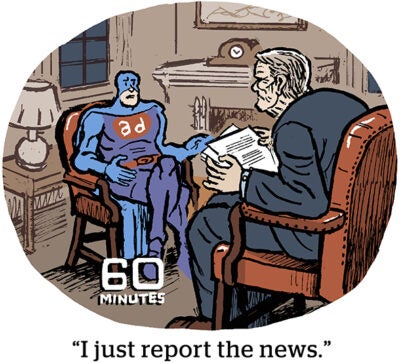Here’s today’s AdExchanger.com news round-up… Want it by email? Sign up here.
Walmart’s Writing On The Walls
Targeting in aisle three?
Beyond selling access to its online ad supply, Walmart is now offering advertisers a way to reach customers while they’re roving physical store aisles, The Economist reports. Theoretically, an advertiser has the best chance of influencing a purchase when someone is standing right in front of an item on the shelf.
Pushing its in-store presence is also a way to differentiate from Amazon.
Following Walmart’s (still pending) acquisition of smart TV maker Vizio, the retailer remains an “ad industry tiddler” compared to Amazon, The Economist writes. (“Tiddler” is British vernacular for “small fish,” if you’re wondering.) So Walmart needs as many sources of ad revenue as possible.
The problem is that, despite most sales still happening inside a store, brands doubt the effectiveness of in-store ads because they’re harder to attribute than digital ads. (Amazon tried installing more cameras in stores for the purpose until customers complained.) Only 17% of CPG brands say in-store campaigns deliver high returns, according to a recent Bain marketing survey.
Still, there’s something to be said about the value of reach. Shopper data aside, advertisers consider Walmart a must-have in their retail media budgets because some quarter-billion customers visit its stores every week.
In A Snap
Snap is crossing its fingers for a TikTok ban, Digiday reports.
Although, to be fair, Snap is less desperate for business these days than it used to be. It’s regained much of its footing after the fallout from Apple’s ATT and finished last quarter with double-digit revenue growth since rolling out new attribution products.
But that growth still pales in comparison to the company’s pre-ATT numbers. Plus, while TikTok’s potential ban looms, advertisers are paying closer attention to Meta Reels and YouTube Shorts.
To catch up to its competition, Snap is actively reminding marketers of the value of something buyers tout all the time: ad spend diversification. Marketers should consider diversifying more now that one of their social media mainstays – TikTok – is threatened if it can’t find a US-based buyer.
“Normally, we have a plan A and B,” says Jennifer Kohl, chief media officer at VML ad agency. “Now we need a plan A, B, C and maybe even D.” Guess “D” leaves the door open for Snap.
What Ban?
Meanwhile, TikTok continues to operate as if it’s smooth sailing ahead. (Sorry, Snap.)
At its annual product summit earlier this week, TikTok announced a suite of AI-powered advertising tools, because of course it did.
Can you even call yourself an ad platform these days if you don’t offer an easy button for AI-generated video and creative?
But TikTok also unveiled a bunch of new performance and measurement solutions in a bid to convince advertisers that TikTok deserves at least some credit for driving all manner of purchases, from app downloads to vehicles.
Seriously, vehicles. In its blog post, TikTok cites commissioned research conducted by Marketcast that claims 52% of users research cars because of content they saw on TikTok.
One of the new tools, à la PMax and Advantage Plus, will automatically choose the “best” creative assets, audience and timing to meet an advertiser’s performance goals.
Another will help automate bidding, budgeting, ad management and creative for TikTok Shops products. And a third tool will combine brand lift and conversion lift studies to give advertisers a more complete view of overall campaign performance on TikTok.
AI-generated creative is cool and all, but measurement is the true way to a marketer’s heart.
But Wait, There’s More!
Gartner: Marketing budgets have been shrinking in recent years. [Marketing Brew]
The US DOJ sues to split up Ticketmaster and Live Nation in a groundbreaking anti-monopoly lawsuit. [CNN]
Lawmakers move to advance the American Privacy Rights Act, a federal data privacy bill that comes with mixed reviews. [Bloomberg]
Warner Bros. Discovery and ESPN strike a 5-year deal for College Football Playoff games. [CNBC]
Paul Bannister: The Privacy Sandbox glitched for 16 hours yesterday. It’s no big deal right now, but what happens if there’s a Sandbox bug after third-party cookies are fully phased out in Chrome and there are no other options? [post]
You’re Hired!
OpenX promotes Gil Sommer to VP of global product. [release]
















